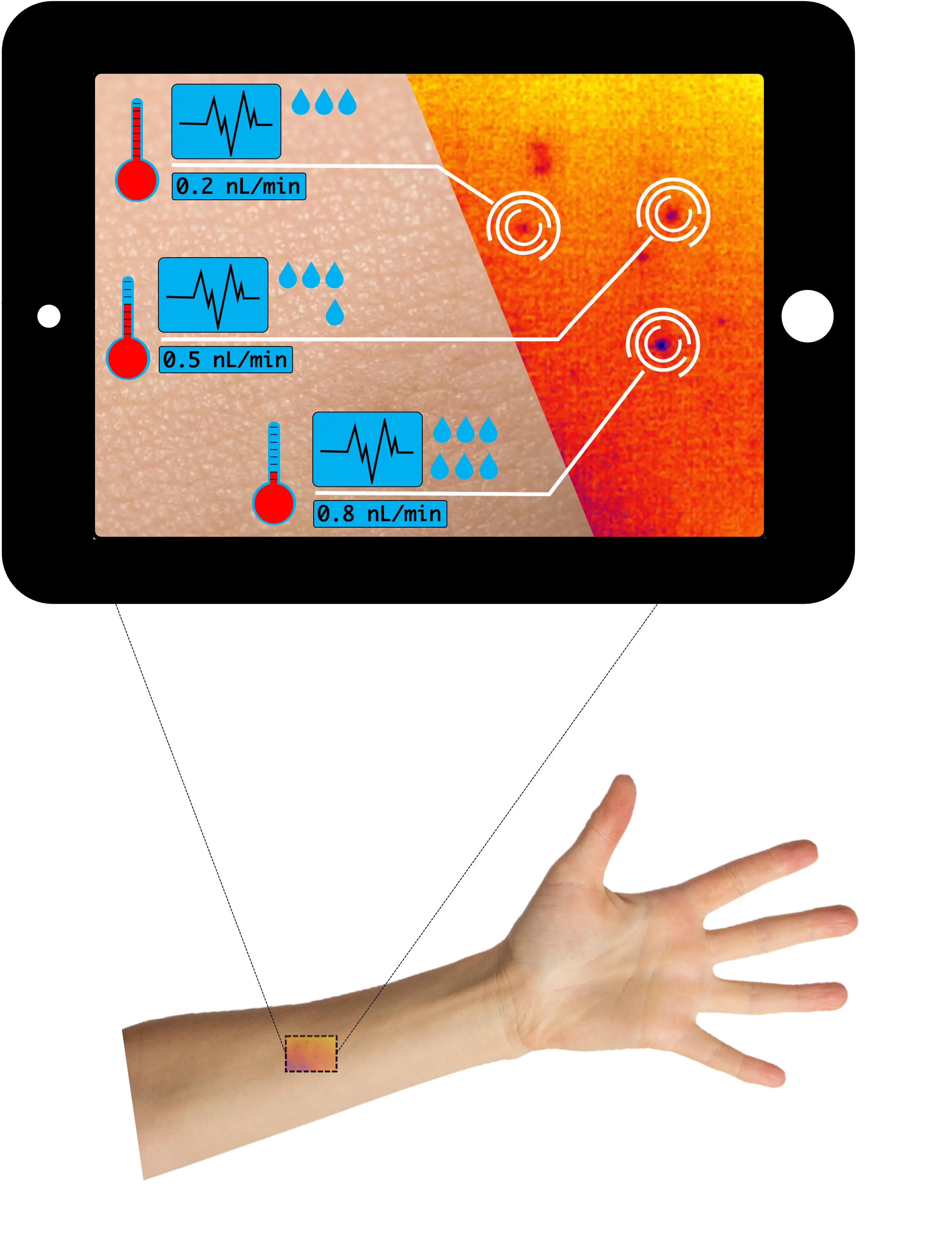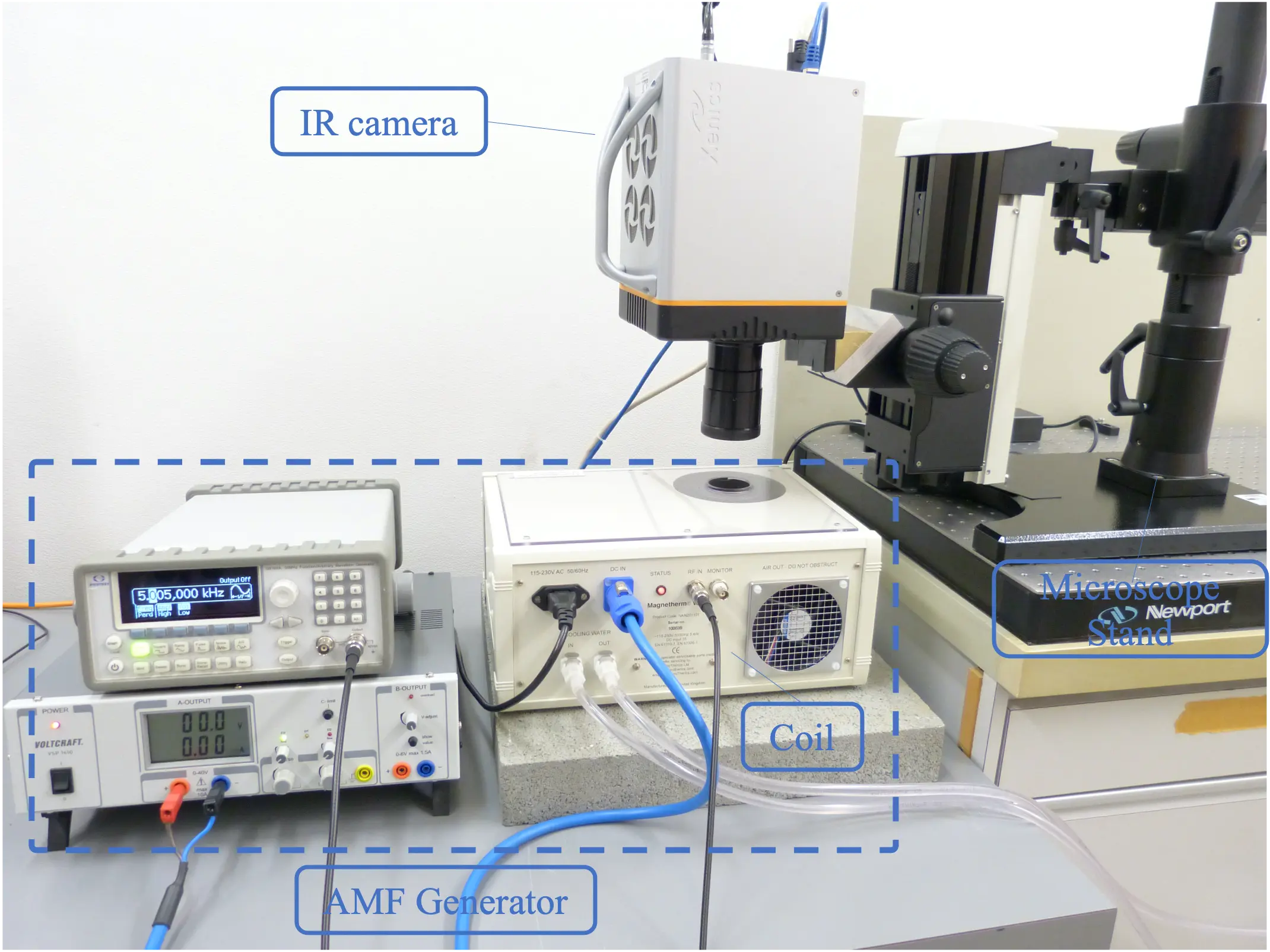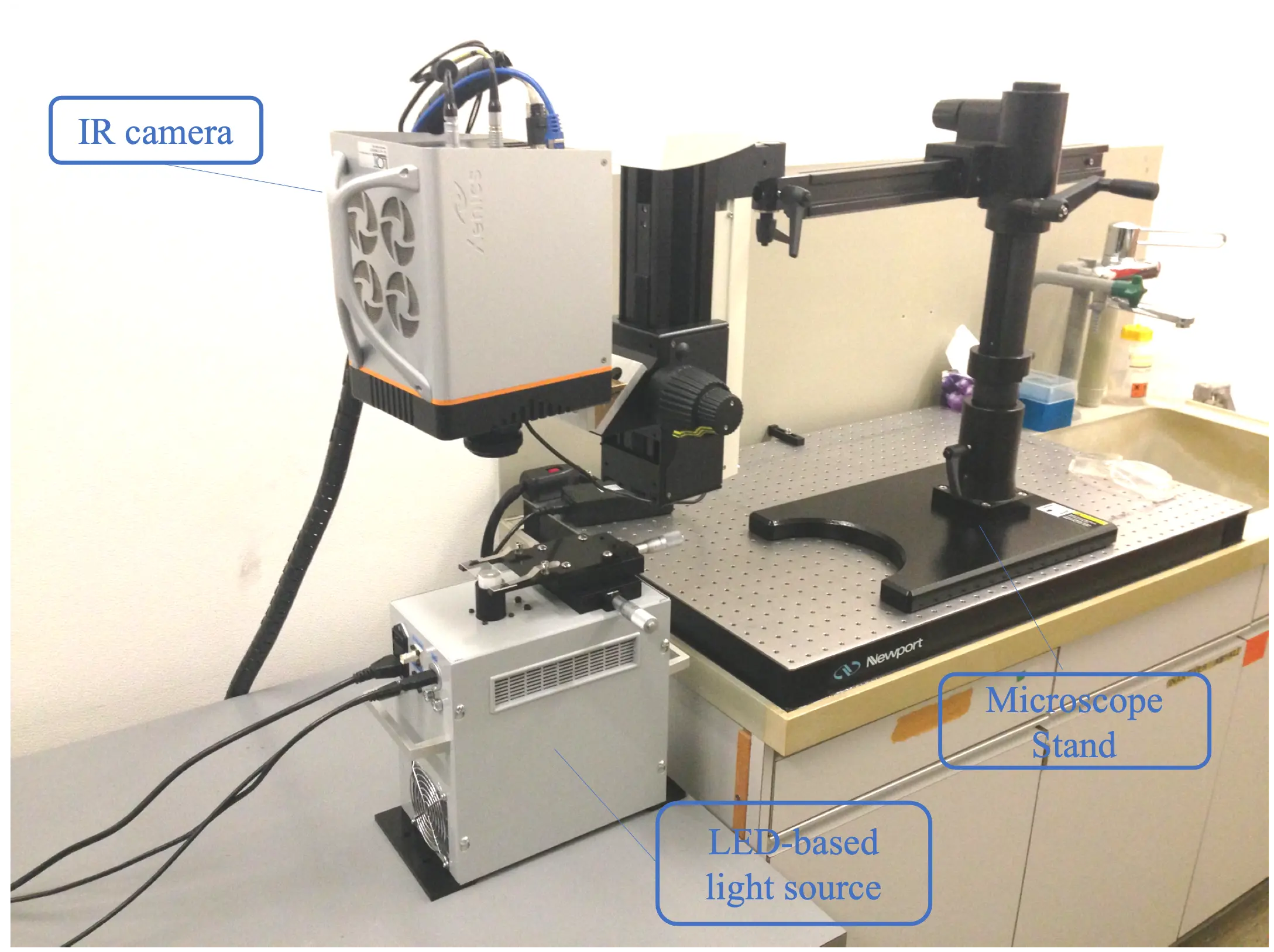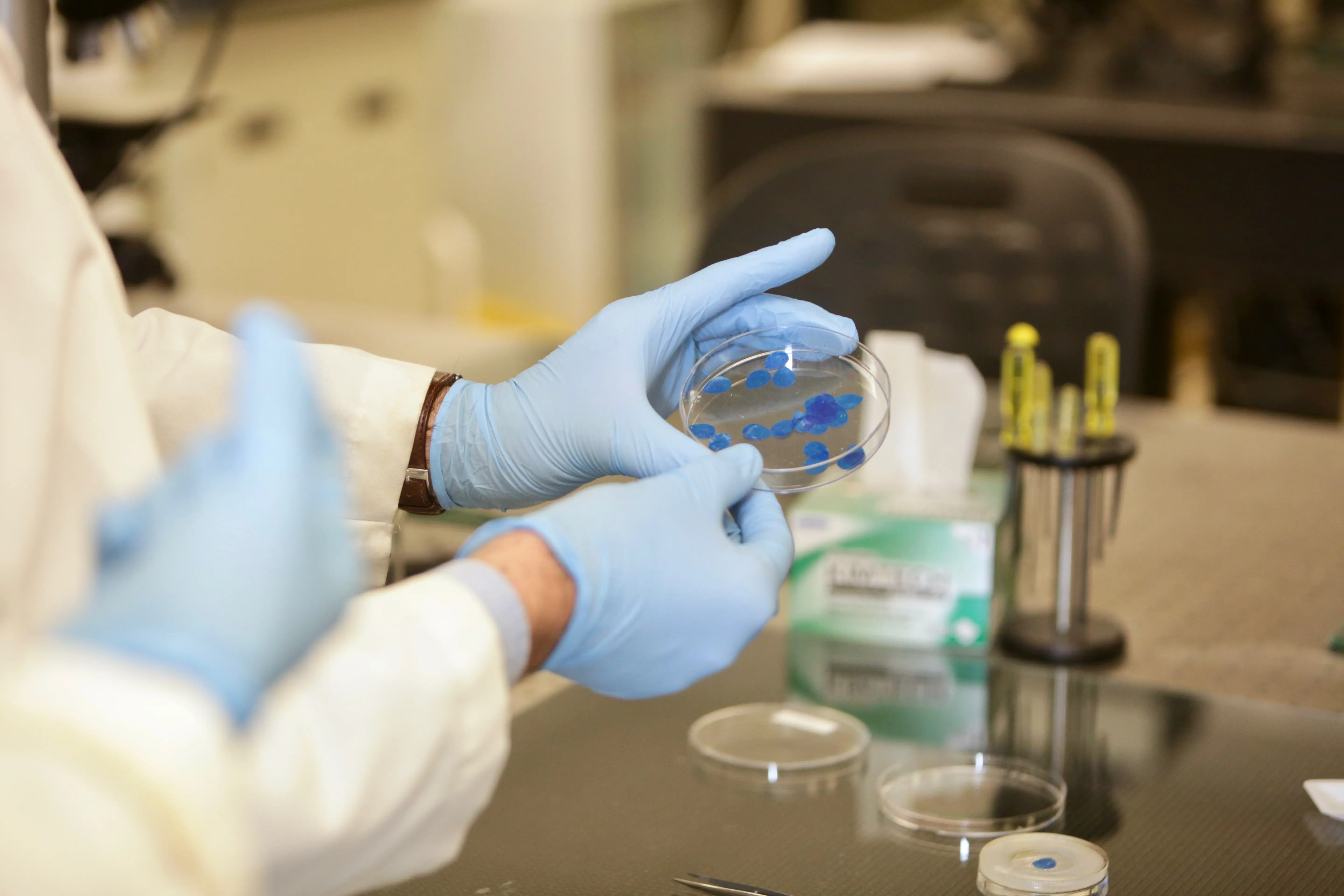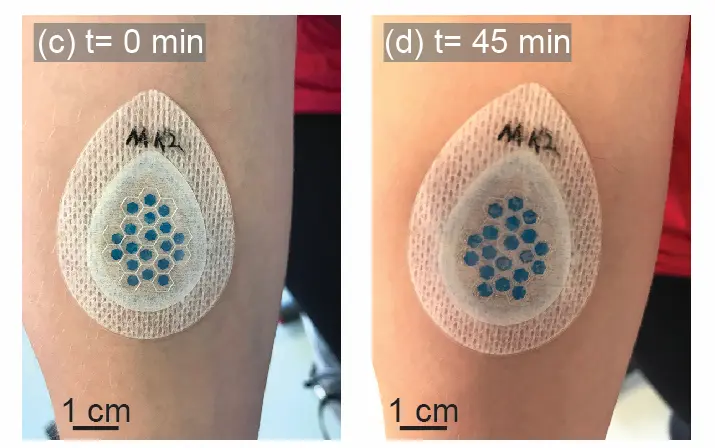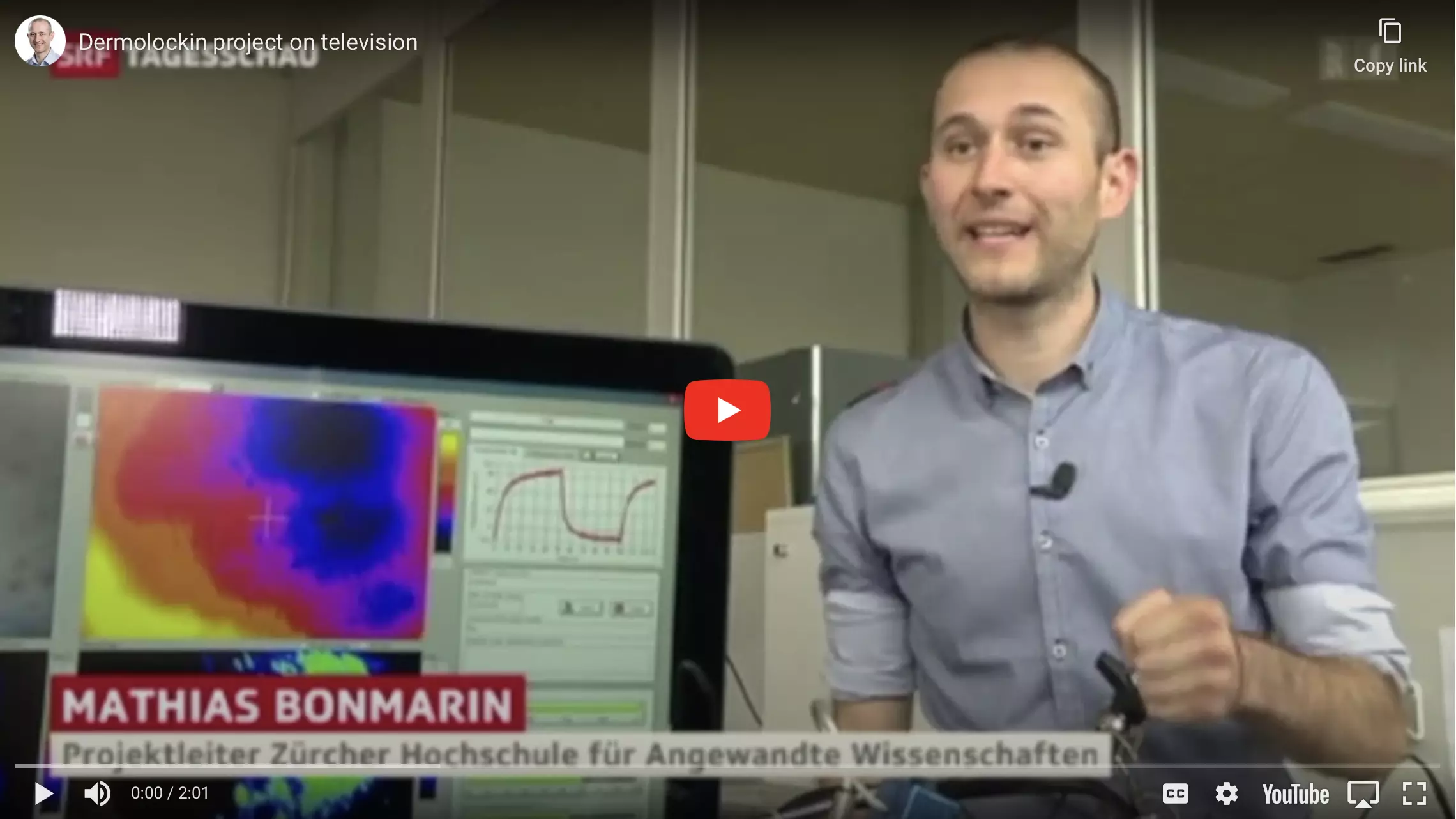Sensors and Measuring Systems
Applied Research & Development
Featured articles
"A Simple Non-Contact Optical Method to Quantify In-Vivo Sweat Gland Activity and Pulsation"
Objective: The current predominant techniques for monitoring sweat gland activity rely on basic gravimetric methods, measuring the overall sweat rate across multiple glands within a specific skin region. A more advantageous approach would involve a method capable of individually quantifying gland activity. This improvement is particularly crucial for enhancing the efficacy of treatments for conditions diagnosed through sweat tests, such as hyperhidrosis, cystic fibrosis, and peripheral nerve degeneration.
Methods: We developed an optical method employing an infrared camera to track skin surface temperature. Subsequently, a thermodynamics computer model was implemented to analyze these temperature values, along with environmental factors like ambient temperature and relative humidity. This allowed the calculation of sweat rates for individual glands under chemically stimulated and unstimulated sweating conditions. The optical method also enabled the observation of pulsation patterns in individual sweat glands.
Results: In this preliminary study, we successfully demonstrated the feasibility of the optical approach by measuring sweat rates of individual glands across various locations on the body. The calculated values obtained through this method aligned with expected sweat rates derived from literature values. Additionally, we observed the absence of pulsatile sweat expulsion during chemically stimulated sweating and proposed a potential explanation for this phenomenon.
Conclusion: Our study introduced a straightforward, non-contact optical method for in-vivo quantification of sweat gland activity.
Significance: This method empowers researchers and clinicians to simultaneously investigate multiple sweat glands, offering the potential for more precise diagnoses and treatments. Furthermore, it enhances the utility of wearable sweat sensors, promising advancements in the monitoring and management of related medical conditions.
Featured projects
Thermal imaging-based investigation of stimuli-responsive nanomaterials in complex environments
Stimuli-responsive nanomaterials are nanoscale materials that exhibit the ability to generate heat upon stimulation (alternative magnetic field, light, etc.). Together with the Adolphe Merkle Institute (Prof. Alke Fink) and the University of Fribourg (Prof. Marco Lattuada), we are developing new thermography-based measurement methods to investigate stimuli-responsive nanomaterials in complex environments like tissue or cells.
Several years ago, we were the first to propose lock-in thermal imaging (LIT) as the optimal method to detect, characterize and quantify nanoparticles "in-situ". Since then, we protected our invention with 2 patents, published numerous scientifc results and created the spin-off company NanoLockin GmbH (CEO: Dr. Christoph Geers). We are constantly improving and further developing the technology with our partners to establish LIT as the new gold standard in Nanoscience and Nanotechnology.
Sweat Sensing
The Sensors and Measuring Systems lab is active in sweat sensing research. Together with the group of Prof. Jason Heikenfeld, we developed ultra simple wearable patches to monitor swear rate (DOI: 10.1039/C9LC00911F ). We are currently extending this technology to measure other sweat properties like pH.
Videos
3D printed novel semi-dry electrodes - Stay tuned for the upcoming paper from Christian Grossmann
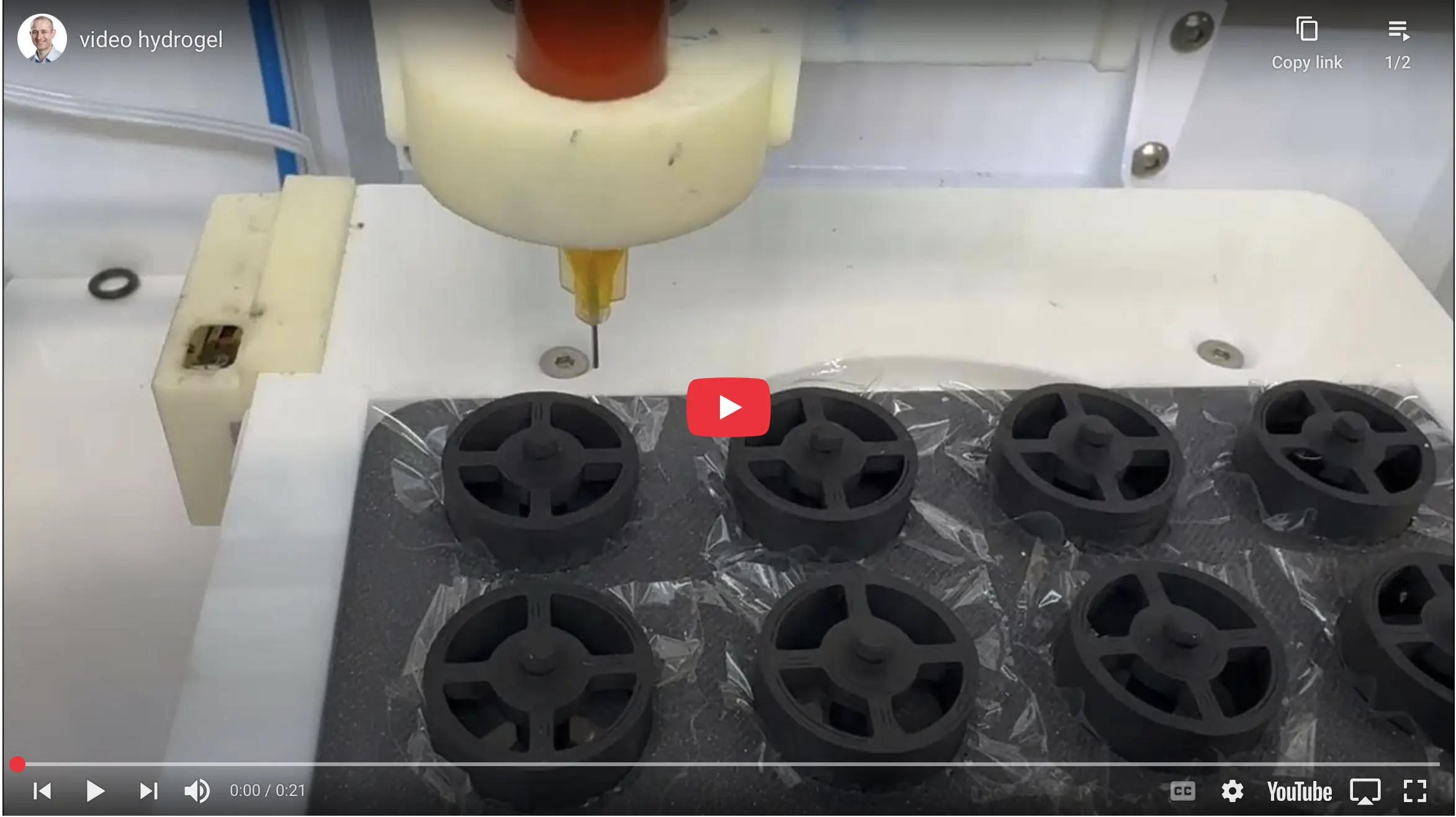
Artificial skin models
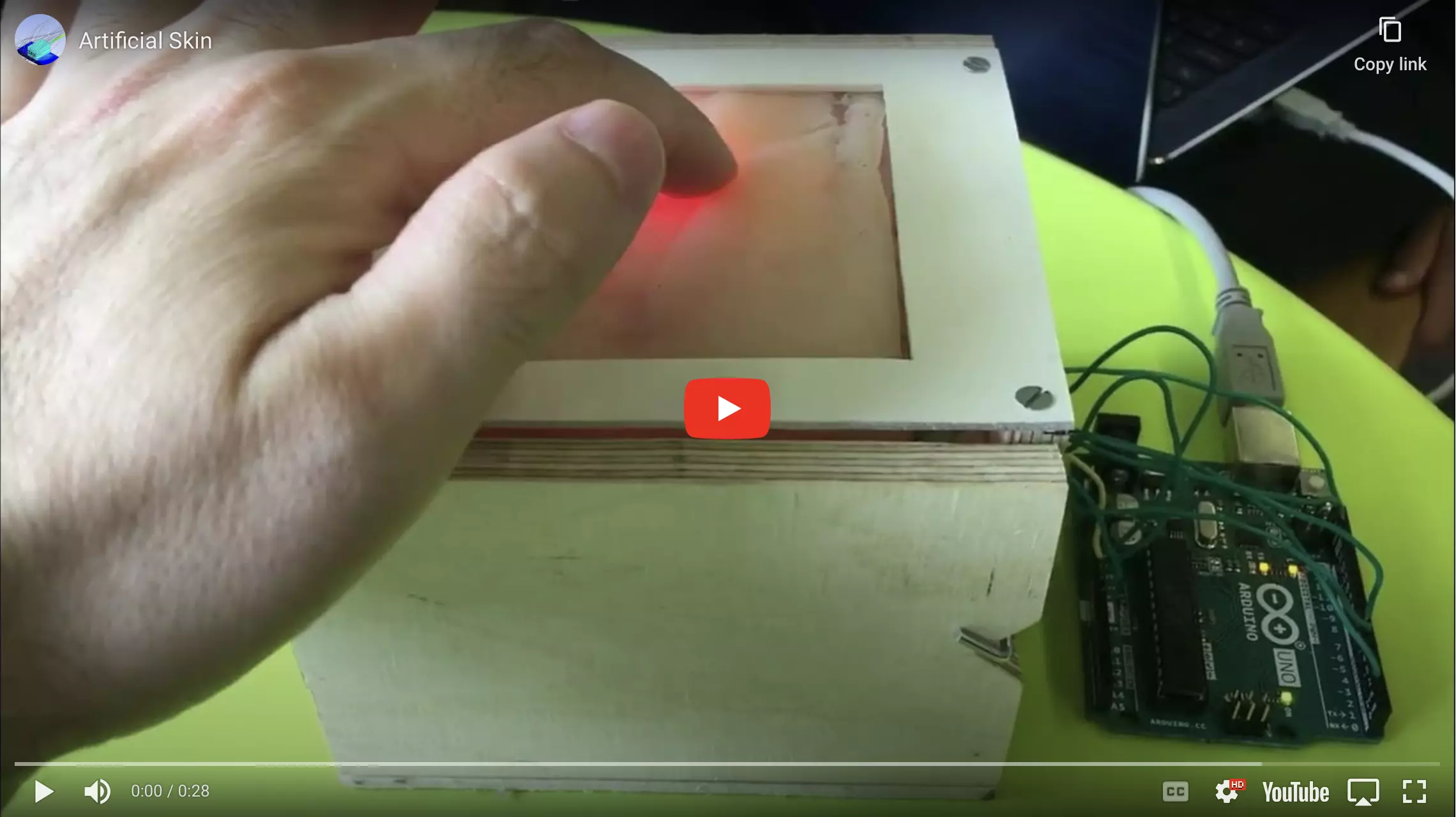
Artificial tactile skin
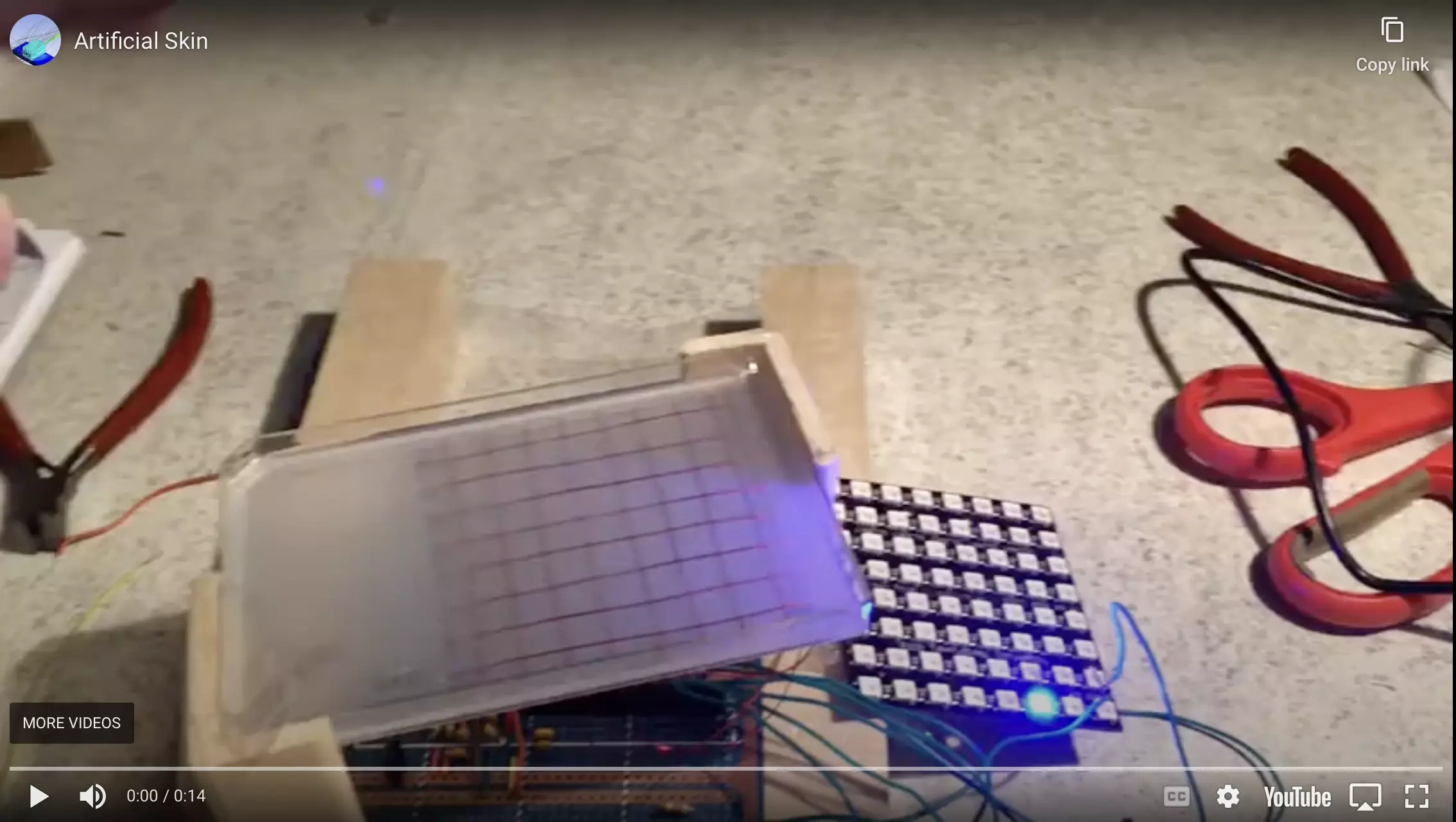
ThermaIR - Low-cost thermal treatment of human cutaneous leishmaniasis lesions
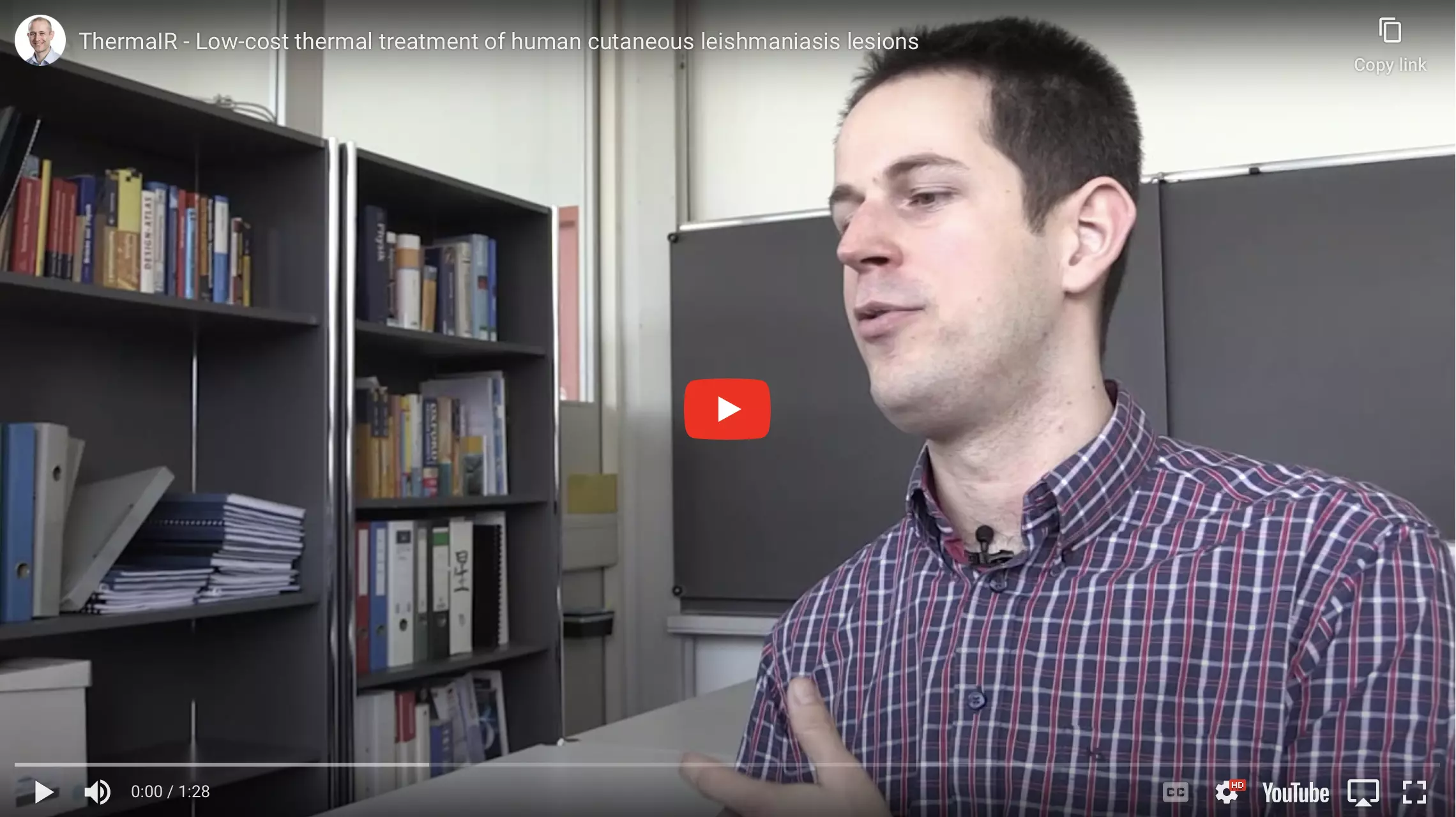
Dermolockin project
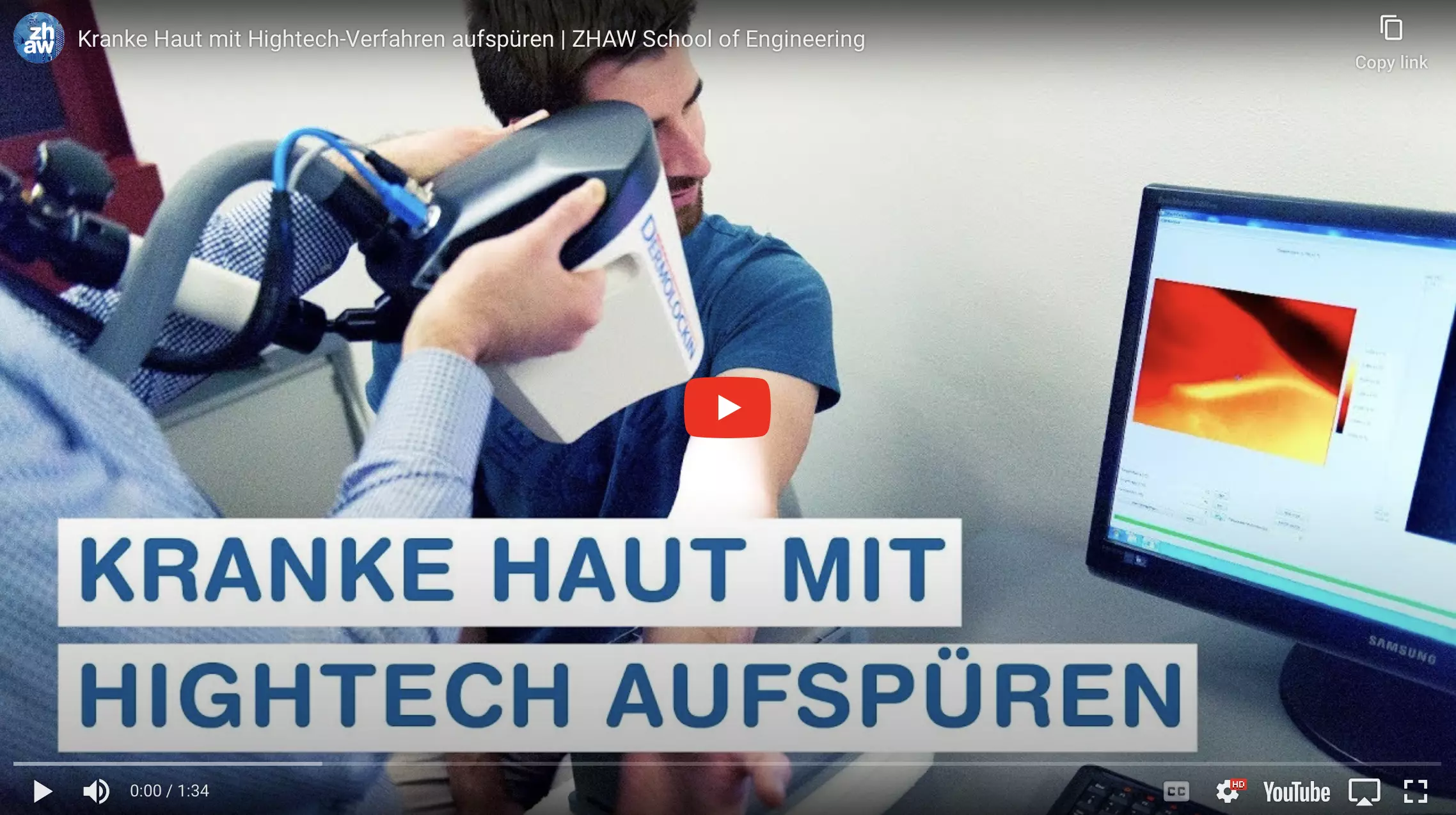
Dermolockin on SRF!
NanoLockin - Check if your particles are hot!
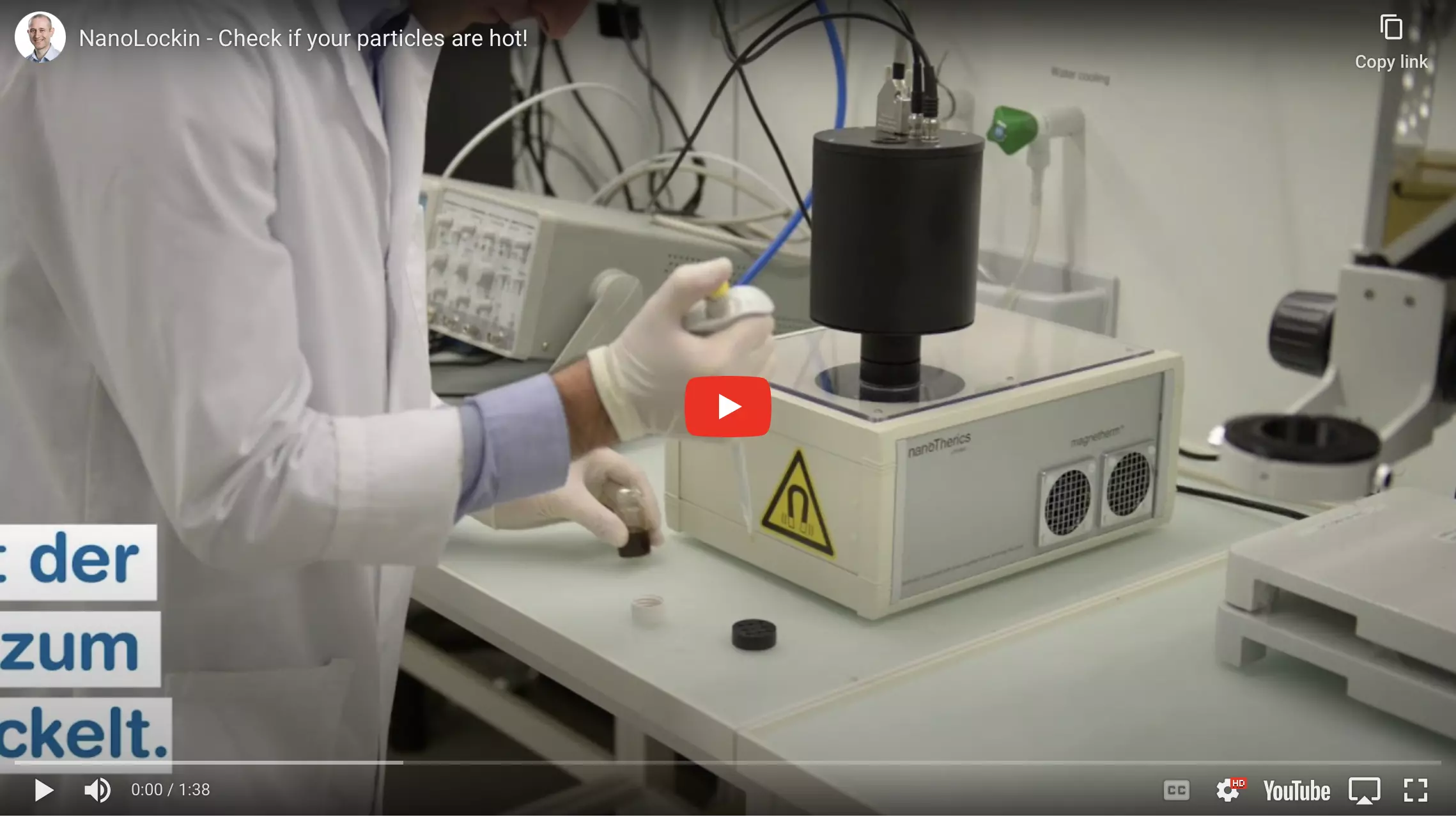
Project lists (non confidential projects only)
-
Exploration of Microwave-Based Dynamic Thermal Imaging for Lymphedema Diagnosis
The project has two objectives: / Develop a novel diagnostic approach for lymphedema using microwave-based dynamic thermal imaging, specifically Active Microwave Thermography (AMT). / Design and fabricate polymer-based skin phantoms, perform microwave-stimulated thermal measurements, and analyze…
future, 01/2026 - 05/2026
-
Saliva-based Monitoring System to predict Asthma Exacerbation Risk (AsthmaPre)
Develop **SalivAlytics**, a system that alerts patients with Asthma about an exacerbation in advance of the onset of symptoms. Patients can thus take measures like consulting their specialist. This aims to avoid the outbreak of exacerbations and costly emergency department visits and…
current, 04/2025 - 12/2027
-
SpectralPad
SpectralPad offers an easy-to-use, accurate and cost-efficient way to diagnose and monitor yellow skin diseases for more than 1 billion patients world wide.
expired, 02/2024 - 07/2025
-
Conductive Skin
New driveline for VAD
expired, 03/2023 - 06/2024
-
DermatoTherma

A safe treatment for cutaneous Leishmaniasis
expired, 09/2022 - 02/2024
-
Development of a point of care device prototype for blood ammonia monitoring
Hyperammonemia and associated neurological manifestations (hepatic encephalopathy) lead to coma and death and incur high costs. It affects 30-45% of cirrhotic patients. A novel portable point of care device based on pH-gradient polymersomes for daily monitoring of ammonia will alleviate the burdens.
expired, 04/2022 - 01/2025
-
Development of a stable and triggerable ultrasound transducer for in-vitro hyperthermia application

The project focuses on the development of a stable and triggerable ultrasound transducer for in-vitro hyperthermia applications. The device will be specifically developed at ZHAW to meet the technical and experimental needs of Prof. Maake’s group at the University of Zurich, Institute of Anatomy.
expired, 12/2020 - 05/2021
-
Digital Dermatology: Studying the impact of digitalization on dermatologists, patients and healthcare
The goal of this fellowship of the DIZH is to study the impact of the digitalization of dermatology on the society. The result will be a white paper to inform and guide the various stakeholders as well as a proposal for the first industry or foundation end.
expired, 09/2020 - 08/2021
-
Wearable Device for Lymphedema Diagnostics
This project concerns development of a wearable device for fluorescence detection in near infrared (NIR) range. The device will be used for monitoring the clearance of NIR tracers from skin for early diagnostics of lymphedema in post-breast cancer patients. This project is a cooperation with ETH…
expired, 09/2018 - 09/2019
-
Increasing the Capabilities of Dermatoscopy Using Thermal Imaging Sensors (DermaIR)

We want to extend the abilities of standard epiluminescence microscopy (also known as dermatoscopy) by adding dynamic thermal imaging capabilities. Giving the physicians additional information about the temperature of the lesion will drastically improve the differential diagnostic of various skin…
expired, 06/2018 - 06/2021
-
Skinobi – Affordable Sensor to Track Skin Condition and Age

The skin is the first barrier of our organism and plays therefore a very important role. Like every other organs, skin can be affected by different diseases. Although very few of them are lethal, they can have a dramatic psychological impact for those affected. In addition, in our modern society,…
expired, 01/2018 - 09/2021
-
Thermal Imaging in Dermatology
Due to recent technological achievements and the transfer from military technology to civil applications, thermal imaging or thermography is currently undergoing a renaissance. Thermography is an investigation tool which advantages are undisputed in engineering, for example for the non-destructive…
expired, 07/2015 - 07/2019
-
Dermolockin – A New Diagnostic Tool for Skin Cancer Detection
Skin cancer is exploding in industrialized countries and an optimal detection is crucial for choosing the appropriate treatment. For this purpose, Dermolockin GmbH has recently developed a new thermography-based diagnostic tool allowing precise tumour margin characterization. The proposed project…
expired, 01/2015 - 03/2019
-
A New Diagnostic Tool for Skin Cancer Detection
Due to sun exposure and aging of the population, skin cancer is exploding in industrialized countries becoming a major health issue. Just in Switzerland, 15 000 new cases are diagnosed every year making skin cancer the most general form of cancer. The current diagnostic of skin cancer is…
expired, 07/2014 - 12/2016
